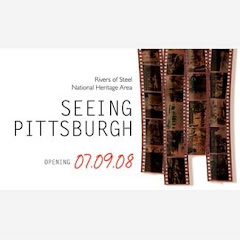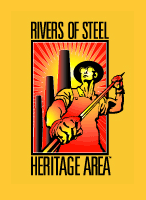
Anyone who claims to really know Pittsburgh, its neighborhoods, its suburbs, its not-far-off rural areas, is probably kidding himself.
Pittsburgh is the sum of its parts, a stitched-together Terrible Towel of shared loves and hates, a place where the best way to give directions often involves mentioning places that don't exist anymore.
There are sincere little towns and hamlets and bustling city streets, but how many residents of the collective areas known as Western Pennsylvania actually ever wander beyond the boundaries of those little towns or city streets?
Part of the charm of "Seeing Pittsburgh," a project launched more than a year ago to help celebrate the city's 250th birthday, is its grass-roots effort to capture what's important in any particular neighborhood.
Ron Baraff and Tiffani Emig of the Rivers of Steel National Heritage Area in Homestead gave cameras to 44 people from various walks of life. The directions were simple: shoot photos of what's important to you in your neighborhood. They shot buildings, friends, pets, ladies making pierogies, wrestling matches, gardens, squirrels, weeds, traffic ...
"One person was a professional photographer and some folks had never shot anything before," said Mr. Baraff, Rivers of Steel director of museum collections and archives. "The equipment varied; some of the best [photos] came to us from the people using disposable cameras."
Participants were recruited from 11 communities ranging from large bustling areas such as Squirrel Hill and Mt. Lebanon to tiny Presston -- a small community within Stowe -- and the Mount Washington co-op of Chatham Village.
Organizers found some photographers through community organizations. Others were found in coffee shops or other local gathering places. They offered disposable cameras, although some of the participants chose to use their own cameras and Christine Bethea, who lives in the Hill District, even used the tiny camera in her cell phone.
The resulting photographs, more than 300, were displayed at the Rivers of Steel center in an exhibit that closed recently. The project also yielded a book, "Seeing Pittsburgh," which can be found in local stores and online, as well as a slideshow on the center's blog on the Web site at riversofsteel.com.
"Seeing Pittsburgh" is about the grit of reality. One of the youngest photographers, Beechview Elementary student Nick Darke, submitted a photo of his neighborhood's abandoned public swimming pool.
"It was not just the positive," said Mt. Lebanon's Nita Fandray, whose favorite photo is a white Honda parked with its passenger-side wheels nearly on the sidewalk.
"Parking on sidewalks, curbs, grass (even front yards!) runs rampant in Mt. Lebanon," she wrote in the caption.
Amber Adkins, a teen who lives on the Hill, shot a photo of her friends goofing around on the swings. But she also took one of a boarded-over theater, and in the caption lamented the lack of recreation options for young people.
Not surprisingly, some of the kids chose to shoot their schools. In the book, Colfax student Madeline Colker has a strong photo of dismissal time at the Squirrel Hill elementary school.
Newlyweds Melanie Rankin Groves and her husband, Steve Groves, had a different take on Squirrel Hill. Her featured photo shows the bright reflection of fruits and vegetables in the plate-glass window of a market on Murray Avenue. Mr. Groves' photo shows the neon sign for Little's Shoes, an icon in the area. Both grew up in rural Butler County and found themselves drawn to the city, she said.
Mr. Baraff refers to himself as a "gumbander," someone who grows up in Pittsburgh, leaves in early adulthood but chooses to return. He attended Mt. Lebanon schools and now lives in Squirrel Hill.
"We wanted to know what makes Squirrel Hill Squirrel Hill? What is the North Side?" he said.
He cited Presston, a company town built around the manufacturing of railroad cars and sandwiched between railroad tracks and the Ohio River.
"I lived here a good portion of my life without knowing it exists," he said. "You could see it from Route 65, only two streets but four blocks long. And every roof line is exactly the same.
Jim Levendosky of McKees Rocks is a self-employed artist who took some striking photographs of neighbors at work and play. Although he has a 35mm camera, he chose to use a disposable one to shoot mostly candids.
"One of my favorites is the pierogi ladies,'' he said.
The photo, which is included in the book, shows a line of hair-netted women and a couple of men working the floury assembly line. Two other photos are striking portraits of musicians: one, a disheveled drummer, the other, an accordion player.
"The only thing I regretted was not being able to include more people," Mr. Levendosky said.
If there is a signature display in the book, however, it's Nate Boguszewski's side-by-side photographs of a studio-wrestling-style bout in Lawrenceville. On the left, a referee checks out what appears to be a free-for-all. On the right is a shot of the crowd sitting dispassionately on folding chairs.
Mr. Baraff said that while the exhibit has closed in Homestead, it will likely travel. Folks in Chatham Village have planned workshops around the photos and the concept they represent, and a Downtown gallery also might have a display.
"This project was never really meant to end," Mr. Baraff said. "What we're hoping is that pieces of the exhibit can travel, and, hopefully, other neighborhoods will want to be part of it."





